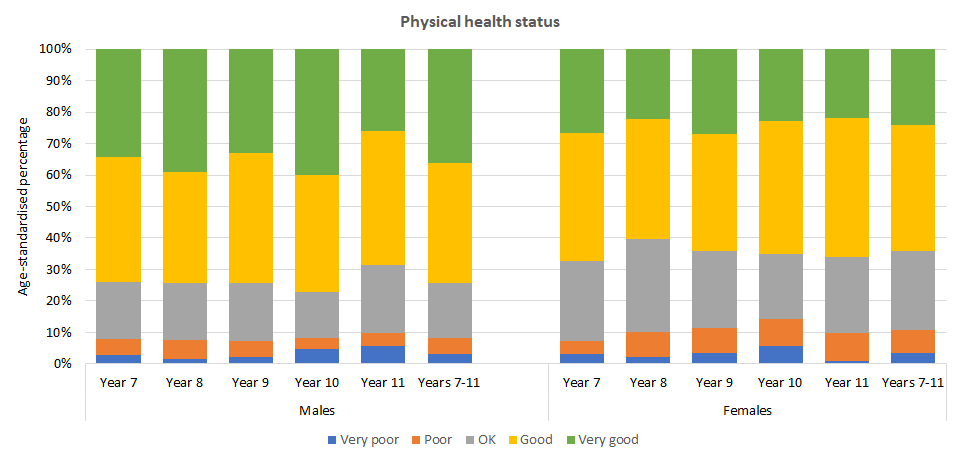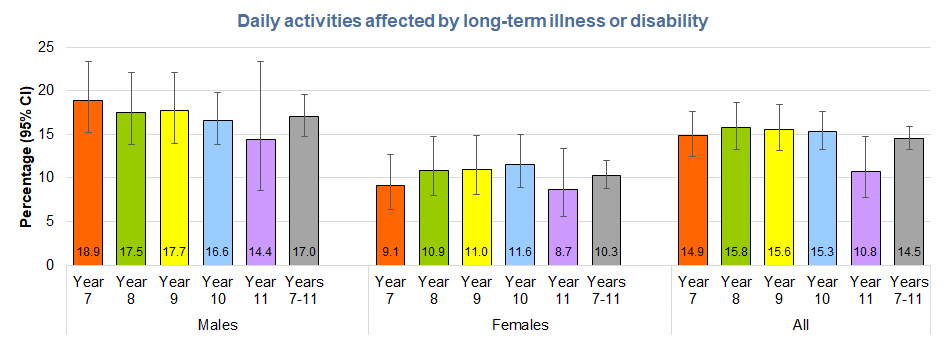Index
This topic area covers statistics and information relating to physical health status among children and young people in Hull including local strategic need and service provision. Further information relating to Physical Health Among Adults is given under Lifestyle Factors within Adults. General health information has been collected within Hull’s Health and Wellbeing Surveys and full reports are available under Surveys within Tools and Resources.
This page contains information from the Office for Health Improvement & Disparities’ Fingertips. Information is taken ‘live’ from the site so uses the latest available data from Fingertips and displays it on this page. As a result, some comments on this page may relate to an earlier period of time until this page is next updated (see review dates at the end of this page).
Headlines
- Better health is central to human happiness and well-being. It also makes an important contribution to economic progress, as healthy populations live longer, are more productive, and save more. This affects everyone in society – individuals, families and the wider community. Poverty and deprivation as well as many other factors have an adverse impact on health.
- There are huge inequalities in Hull in relation to physical health which impacts greatly on all aspects of life and wellbeing.
- From a local survey conducted among secondary school pupils in 2016, self-reported health was better among males compared to females, and better among younger pupils. Overall, 36.3% of males reported their health as very good, 38.1% as good, 17.5% as OK, 4.8% as poor and 3.3% as very poor. Among females, 24.2% reported their health as very good, 40.0% as good, 25.1% as OK, 7.3% as poor and 3.4% as very poor.
- One in six boys and one in ten girls stated they had a long-term illness or disability which limited their daily activities.
The Population Affected – Why Is It Important?
Better health is central to human happiness and well-being. It also makes an important contribution to economic progress, as healthy populations live longer, are more productive, and save more. Poverty and deprivation and many associated factors such as poor housing, crime, lack of qualifications and unemployment also indirectly influence health. People who live in less affluent areas are likely to have poorer access to healthcare and other services. The circumstances people live in can make it harder to live healthily, and psychosocial stress leads to physical harm. Furthermore, many people with disabilities or very poor health have impaired education, training and employment opportunities and are so more likely to live in relative poverty which further impacts on physical health and emotional wellbeing, creating a vicious circle of cause and consequence.
There is a high number of children growing up in poverty in Hull, and this means that the health of children in Hull is adversely affected by poverty and deprivation. Furthermore, children growing up in households where families adopt unhealthy lifestyles and behaviours are also much more likely to undertake these same behaviours as adults. So it is important that children are given the best start in life to maximise their physical health as well as their emotional wellbeing.
There may be a change in services available as young people who are ill or have long-term medical conditions and diseases such as diabetes, learning disabilities, special educational needs or mental health as they transition into adulthood. Continuity of care is important in order to facilitate a smooth transition into adulthood, and ensure they receive the best care.
The Hull Picture
In the local Young People Health and Wellbeing Survey conducted during 2024 among secondary school pupils, self-reported health was better among males compared to females, and better among younger pupils. Overall, 36.3% as very good, 38.1% as good, 17.51% as OK, 4.8% as poor and 3.3% as very poor. Among females, 24.2% as very good, 40.0% as good, 7.3% as OK, 3.4% as poor and 3.4% as very poor. Among year 7 boys (aged 11-12 years), 2.9% reported their health as very poor but this almost doubled to 5.6% among year 11 boys (aged 15-16 years). The age differences were similar for girls with 3.3% reporting very poor health among year 7 children compared to 5.6% among those in year 10 (aged 14-15), although only 0.9% among year 11 girls. Younger pupils were the most likely to report very good health, with 34.3% and 26.7% of year 7 boys and girls respectively reporting their health as very good compared to 26.0% and 21.9% of year 11 boys and girls respectively.

One in six boys and one in ten girls stated they had a long-term illness or disability which limited their daily activities. Among males, the percentage reduced with age from 18.9% among year 7 boys to 14.4% among year 11 boys, although in females the percentage tended to increase with age although it was highest among year 10 girls at 11.6%.

The Office for Health Improvement & Disparities’ Fingertips presents information on health status among 15 year olds, but the data is from 2014/15. Despite the data being relatively old, it does provide some kind of benchmarking of health status among young people in Hull compared to other geographical areas. The percentage reporting excellent health among Hull’s 15 year olds was the lowest within the Yorkshire and Humber region at 25.3% (compared to 28.8% for the region and 29.5% for England).
Compared with benchmark
Strategic Need and Service Provision
There are inequalities in relation to heath with people living in the more deprived areas having worse health earlier than those living in less deprived areas in Hull. It is necessary to help improve the circumstances of those living in the most deprived areas of Hull with services working together, and with the people living in those communities to improve health and reduce inequalities.
Resources
Hull’s Young People Health and Wellbeing Surveys
National Institute for Health and Care Research. Young children from deprived areas are more at risk of serious burns and scalds. https://evidence.nihr.ac.uk/alert/young-children-from-deprived-areas-are-more-at-risk-of-serious-burns-and-scalds/
Orton E, Kendrick D, West J, and Tata LJ. Persistence of Health Inequalities in Childhood Injury in the UK; A Population-Based Cohort Study of Children under 5. PLoS ONE 9(10): e111631. https://journals.plos.org/plosone/article?id=10.1371/journal.pone.0111631
Updates
This page was last updated / checked on 25 April 2025.
This page is due to be updated / checked in April 2026.